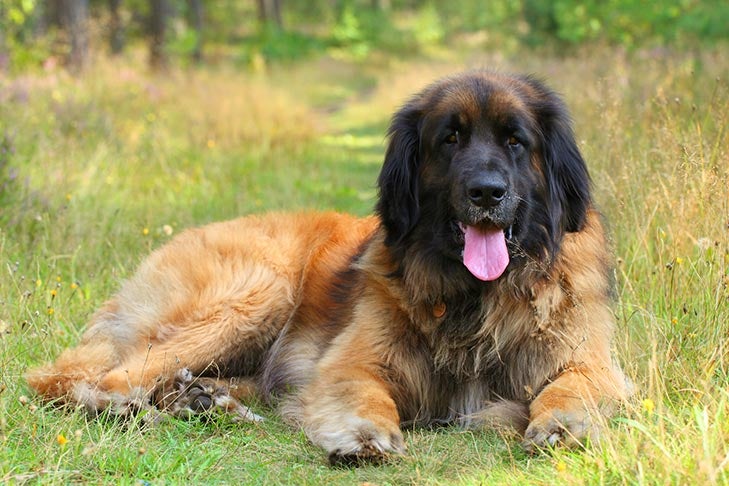
The powerful dogs of the Working Group were bred for a variety of jobs, including guarding property, pulling sleds and carts, water rescue, and protecting livestock. Many of these jobs no longer exist today for dogs to perform as they would have in the past. While they can make great companions, most of these breeds still maintain a strong drive and instinct to work. Channeling their instincts and energy into dog sports can be especially fulfilling for these dog breeds.
Understanding Working Breeds
Working dogs are powerful, eye-catching dogs that can be appealing to many people. However, working dogs are not always the best match for every person. For example, working dogs are generally not happy just sitting around or taking a short walk around the neighborhood. Many of these large, muscular dogs need appropriate outlets for their mental and physical energy to be satisfied.
Not all working dog breeds are especially physically driven. Giant breeds, like the Leonberger and the Great Pyrenees, are more lowkey and slow-moving. Their jobs were to lie quietly and blend in with the livestock, not disturbing the livestock unless there a threat to the flock presented itself. Learn more about your dog breed and their purpose to determine what they’d like best.

Not only are these working dogs happiest when they have jobs to do, but if they aren’t given an outlet for their energy, they will likely create their own “jobs.” These self-created jobs are usually not things their owners enjoy and aren’t healthy or safe for the dog. When dogs become bored, they will often resort to excessive barking, digging, chewing, or escaping their yards. These destructive behaviors get rid of their excess energy but may also put dogs at risk (for example, if they get loose and run into the street or eat something toxic). Providing training outlets through dog sports can help prevent powerful dogs from becoming bored and developing bad behaviors.
It’s important to keep working dogs mentally and physically active and to give them the chance to use their natural abilities. Here’s why different dog sports, as well as dog sport training, might be a good fit for an active member of the working breed.
Breed-Specific Dog Sports
Some sports and activities are specifically designed to harness certain breeds’ natural skills. These events test a dog’s ability to do the work they were historically bred to do. For example, the Working Group includes several livestock guardian breeds, such as the Anatolian Shepherd Dog and Great Pyrenees. Dogs belonging to these breeds may enjoy participating in the AKC Farm Dog Certified (FDC) Test, where a dog completes 12 exercises related to farm work, including jumping over hay bales and being near livestock. Select breeds are also eligible to participate in the AKC’s Herding program, where they can guide or drive livestock.
Historically, some Working Group breeds hauled heavy loads on a regular basis. So these working breeds, including the Bernese Mountain Dog, Greater Swiss Mountain Dog, and Leonberger, may enjoy participating in sports like Drafting or Carting. These events require dogs to pull carts behind them while performing different exercises. Working dogs can also put their keen noses to good use by getting involved in Tracking.

Other, non-breed-specific sports provide additional options. Mushing (also known as sled dog racing) might be fun for cold-weather breeds like the Alaskan Malamute or Samoyed. Individual clubs may also offer breed-specific sports. For example, the Newfoundland Club of America (NCA) offers water rescue trials, channeling the Newfoundland‘s famous ability to save people’s lives in the water.
Dog Sports For Any Breed
AKC dog sports can be a fun way to bond and spend quality time with your dog. Working breeds can also enjoy participating in non-breed-specific dog sports. For example, navigating Agility courses provides plenty of mental and physical stimulation, while Obedience channels a working breed’s desire to work closely with their handler. Due to these large size of these dogs, it’s essential to make sure they’re physically mature before doing high-impact activities, such as full-height jumping or climbing.

Learning new tricks through AKC Trick Dog will keep a working dog’s mind sharp, while AKC Scent Work allows a dog to use their naturally strong sense of smell for a functional purpose (locating a scent). AKC Rally is another sport that is all about teamwork between handler and dog, ideal for dogs bred to work alongside humans. This sport engages your dog mentally and physically, since they have to precisely perform a course that’s made up of 10 to 20 signs while remaining under control.
Working dogs may enjoy other activities, too. Although it’s not an AKC event, Treibball, an alternative to Herding that doesn’t require livestock, may also be fun for your dog.
Sports Training for Working Dogs
Because working dogs are generally very large and strong, training is essential for everyone’s safety. In particular, dog sports training can enhance the human-canine bond. It can also build a shared language of communication between you and your dog. This can help to prevent behavioral issues or misbehavior resulting from a lack of general obedience training. For example, both owner and handler have to train hard (and work together) for AKC Rally, learning the signs and moving continuously through the course. Working on agility courses in a training center or at home can keep your dog nimble and teach them to follow your cues.
It takes time and focus to train your dog to excel in a sport (or multiple sports). That effort both gives your working dog a job to do and can provide you with consistent training structure. By creating and maintaining a consistent training routine for your working dog, you’ll be able to channel your dog’s drive and desire to work in productive ways. You’ll also help your dog feel mentally and physically satisfied and fulfilled.

